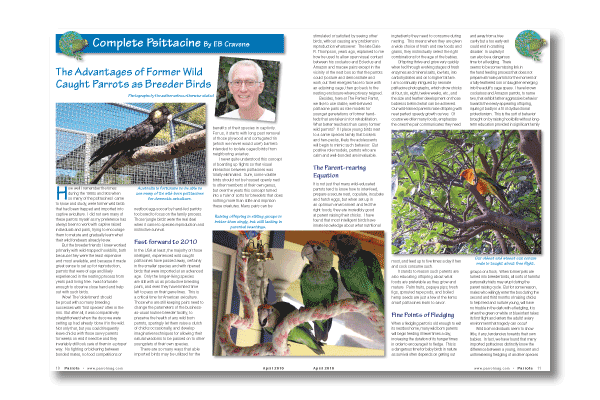The Advantages of Former Wild Caught Parrots as Breeder Birds
EB Cravens
How well I remember the times during the 1980s and 90s when so many of the psittacines I came to know and study, were former wild birds that had been trapped and imported into captive aviculture. I did not own many of these parrots myself as my preference has always been to work with captive raised individuals and pairs, trying to encourage them to mature and gradually learn what their wild forebears already knew.
But the breeder friends I knew worked primarily with wild-trapped hookbills, both because they were the least expensive and most available, and because it made great sense to set up for reproduction, parrots that were of age and likely experienced in the nesting process from years past living free. I was fortunate enough to observe close hand and help out with such birds.
Wow! The ‘olde timers’ should be proud with so many breeding successes with ‘first species’ often in the mix. But after all, it was comparatively straightforward when the duos we were setting up had already 'done it' in the wild. Not only that, but you could frequently leave chicks with those savvy parents for weeks on end if need be and they invariably still took care of them in a proper way. No fighting or bickering between bonded mates, no food competitions or nestbox egg-soccer by hand-fed parrots too bored to focus on the family process. Those 'jungle birds' were the real deal when it came to species reproduction and instinctive survival.
Read more in the magazine…









Parrot Chat
Buyers Guides
Breeding articles